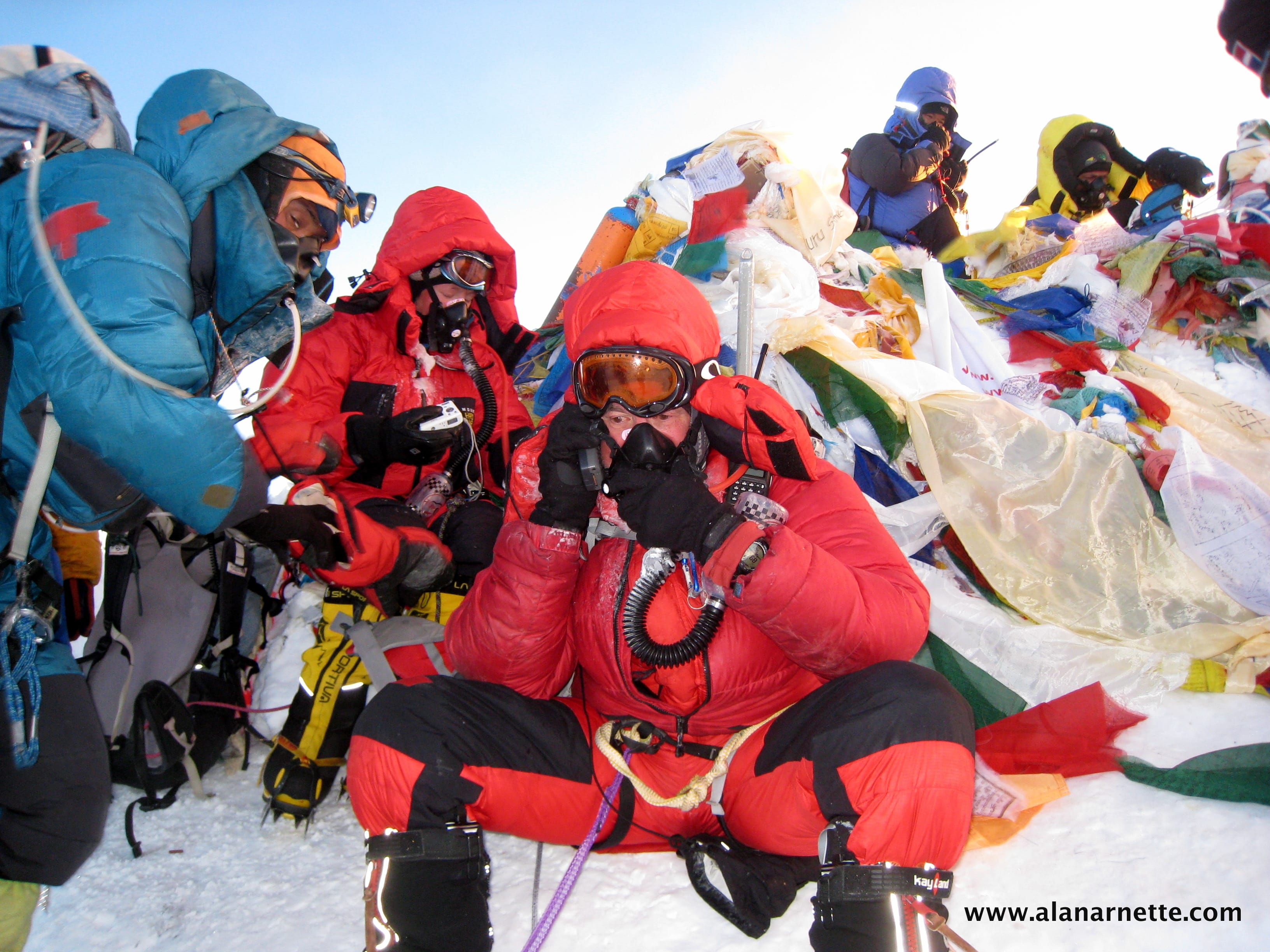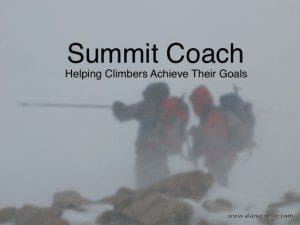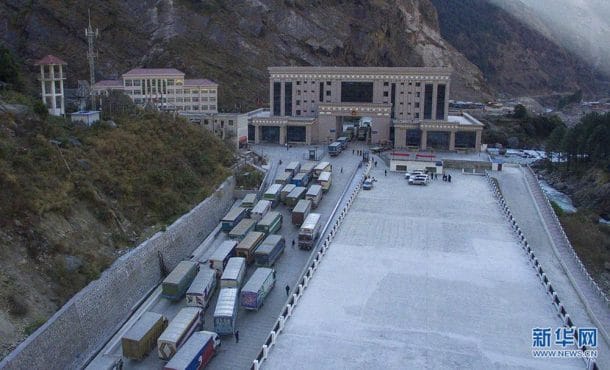With #Everest2018 in the books, I wanted to step back and see what lessons were available from this season and how to prepare for #Everest2019, if that’s in your mind. First off, let me start with a plug for my consulting service, Summit Coach, where I have worked with many climbers over the past 18 months to help them successfully summit Everest, Gasherbrum II, Denali and other peaks across the world. More on this in a moment.
Everest 2018: The Good and the Bad
This season was good in many respects with my estimate of a record 700+ summits and a death count in the “median” range, but once again could some of these deaths have been prevented? Global Rescue CEO Dan Richards said they conducted 66 evacuations off the peak ranging from 2 to 3 a day. Everest ER said they treated almost 400 patients, mostly for respiratory issues, followed by musculoskeletal injury, then stomach upset. Perhaps more alarming was their comment, “We may have seen more cases of frostbite than ever this year.” And they had eight cases of life-threatening HACE or HAPE this season.
2018 Lessons
- Frostbite is preventable: with the oxygen, clothing, boot and glove technology, there are few reasons for anyone to suffer frostbite. If they did, it suggests having boots too tight (feet swell at altitude), or too few layers, too little supplemental oxygen or even removing gloves at the wrong time (as if there ever is ever a right time!) These are all climbing basics.
- Stomach issues are preventable: It’s all about hygiene on Everest (or any other mountain). Use of a hand sanitizer is the first easy step – use often and thoroughly including deeply between the fingers and always after using the restroom. Next is up to the cooks in the kitchen and your teammates. All water must be boiled – come to a full boil. Both sides of Everest suffer from too much human waste thus the water supply must be assumed to be contaminated at all camps. If your water is always tepid – be afraid! As for your teammates, were there water bottles sitting on the dining table? Probably and this is how yak dung gets into your food supply. The bottle sits on the ground, moved to the table, moved around and voila, contamination occurs – a simple fix.
- Don’t be a slob: Human waste and litter continue to be a problem with new, and old, climbers plus support staff visiting the world’s peaks in record numbers. While Everest is the poster child, this disgrace is occurring across the globe at an alarming rate. Here in my Colorado Rocky Mountains, the 14,000-foot peaks are seeing regular occurrences of graffiti on rocks. On peaks like Elbrus, there are fields of human solid waste. Even on Denali which has had a “blue bag” policy for years, they allowed the waste to be thrown into crevasses and now experience downstream water contamination. Both Nepal and China have tried to enforce litter rules for the last ten years, but lacking oversight, everyone on the mountain, and I mean everyone, has contributed to the problem so its time for the climbing community to step up and clean up their own backyard.
- Buyer Beware – Not all Guides are Guides: Once again, stories are coming out from Everest 2018 of clients being abandoned on the mountain, climbing alone and dying. I can go through the old adage of you get what you pay for but it’s deeper than this. In some cases there is an outright fraud by operators promoting their services with a slick website while asking top prices, saying whatever the customer wants to hear and delivering the minimum. Poor leadership, poor organization, poor hygiene are the common complaints I heard this season. The promise of two room sleeping tents, cots, unlimited internet, hot showers and “the best food ever” is no substitute for proven experience along with an excellent safety record. The best way to protect yourself is to get references from customers from the previous season that match your experience and age. Then ask again. Sadly, you cannot believe what some operators tell you and that leads me to the next point.
- Self Sufficiency: you are responsible for yourself – no one will take care of you on the mountain. It is a huge mistake to believe climbing a few 6,000 or 7,000 meter peaks is a substitute for real mountaineering experience. If you plan to start with no experience and climb Everest next year, think again. But I know you are saying, “Alan, this year hundreds summited with almost no experience? Are you just trying to drum up business for guides?” First, I promise you we have not heard about the near-death experiences, on-mountain rescues and other crises – the Nepal government put a gag order on any bad news this season and operators have always lacked transparency about their problems. 2018 was one of the best weather years in the history of Everest – 11 straight days of low winds allowing hundreds to spread out on each side thus reducing crowds and long waits at altitude. This was the number one reason the season was mostly safe. But what if it was 2012 with less than five summit days, or the weather moved in unexpectedly like it did in 1996? With so many clients on the mountain, there is simply not enough qualified support available – no matter what the operators say. I was told over and over about “guides” who lacked language skills, or even basic climbing skills. Disaster was averted when oxygen regulators failed at 8,000-meters this year only because most of them occurred with long-time, highly experienced guides who acted quickly and professionally to avoid client deaths. So in order to protect yourself against unqualified guides, gain the proper experience starting on low peaks increase the difficulty and altitude over a few years. Enjoy the experience and don’t view Everest as a peak to be “conquered.'” If you use that word, you lack a fundamental understanding of mountaineering.
- You Need Insurance: Often buying what is seen as as expensive medical or evacuation insurance is a difficult decision however, it is a two sided coin. If you don’t have insurance, and get in trouble, you may hesitate to get the help you need. On the other hand if you do have coverage for a helicopter evacuation, you may be tempted to give up too easily. So in my mind it comes back to the previous point of having sufficient high-altitude experience to know if your body is really hurt or just hurting. This only comes through experience and having properly trained medical advice with years of high-altitude experience at your disposal when the times comes. Counting on a guide who has their own helicopter may sound inviting but may not be in your personal interest, so once again become informed before you need help. Buying trip cancellation or interruption insurance is another expensive option but for those who had it in 2014 and 2015, it allowed them to return for another attempt at no additional cost – and this was worth tens of thousands of dollars.
Questions that Need Answers
I did a post last year with questions you need to be able to answer before you climb Everest. Check out the post for my take on the answers.
- Q: What is the highest altitude you have ever reached?
- Q: When do you use a tent parachute stake on Everest? (trick question!)
- Q: What do you use to replace a lost jumar at the Balcony?
- Q: How long will a 4 liter cylinder of oxygen last running at 2 liters per minute (lpm) or 4 lpm?
- Q Is it ever acceptable to turn your oxygen down or even off while climbing Everest, especially near the summit?
- Q: How long do you wait after a large snowstorm to begin climbing again?
- Q: Will eating the same food as Sherpas increase your chances of summiting?
- Q: How do you keep your hands warm if you lose a glove at 7500 meters?
- Q: How much larger or smaller should your mountaineering boot be compared to your street shoe size? (another trick question)
- True/False: Having a SPOT or Delorme InReach with the SOS feature will ensure that a rescue team will reach you in case of a crisis anywhere in Nepal.
- True/False: Sleeping in an altitude tent replaces the need to do acclimatization rotations.
- True/False: Acclimatizing on smaller nearby peaks substitutes the need to sleep at high altitudes on Everest before making your summit bid.
- True/False: Anyone in ‘good shape’ can summit Everest without much difficulty.
- True/False: Being so tired you can barely move is normal on Everest or at any extreme altitude.
- True/False: Summiting Kilimanjaro, Mont Blanc, Island Peak, Lungser Kangri or Mentok 2 will fully prepare me for Everest.
- True/False: There is no safety difference between climbing with a service that charges $30,000 and one that charges $60,000 as long as you have a Sherpa with you that has summited before.
Summit Coach
I started Summit Coach in late 2016 after seeing a need for an independent, objective service that was not trying to lure people into “training climbs” or worse. It is now common to see peaks like Cho Oyu and Manaslu advertised as “easy” 8,000 meter peaks. I’m shocked to see winter Everest climbs and even K2 marketed as safe if “you go with us.”
I use a proven methodology to work with clients to establish a plan to help them gain the skills, experience, gear and select an appropriate guide. We establish an ongoing 1-1 relationship that is personalized based on your objectives, desired climbing style and budget. One of the critical areas is the selection of the guide. With prices on Everest ranging from $30,000 to $130,000 you can easily choose the wrong company.
My qualifications to be a coach are based on a 30 year-old business career leading organizations, large and small. Also, over 35 major climbs around the world starting at age 38 including eight 8,000M peaks and climbing above 6000 meters over twelve times. I am the oldest American to have summited K2 at age 58 in 2014 and summited Everest in 2011 and Manaslu in 2013. I completed 7 of the 8 “7 Summits” between November 2010 and October 2011. I organized expeditions including to Broad Peak and K2 plus used professional guides. One of my key benefits is that I have not summited every mountain I’ve attempted thus gained valuable lessons I pass on.
As a reader of my blog and my Everest coverage, you are one of over 3 million annual followers. I was cited as “one of the world’s most respected chroniclers of Everest” by Outside Magazine and covered breaking news for them this 2018 season. This coverage has allowed me to stay close to the industry often identifying trends others miss.
Summit Coach is fully independent and does not sell gear or trips. It is not a guide service and receives no compensation from any outside organization. So, I invite you to visit the Summit Coach website to review the services, and pricing to meet almost any budget.
Climb On!
Alan
Memories are Everything
10% of all Summit Coach revenue is donated to Alzheimer’s nonprofit organizations to support caregivers and research






4 thoughts on “Preparing for Everest 2019!”
In your 27 January 2017 post, you made reference to the Indians remeasuring Everest.
Have they released any results in this regard to your knowledge?
very interesting!
They said it would take years …
Alan, as always thanks for the comprehensive updates on Everest and the other 8000m peaks during peak summit season. Each year I hope to be getting closer to the time when you are reporting back about a team that actually includes me!
Thanks for your time and effort to keep us unfortunate city slickers up to speed!
Thanks Sally
Comments are closed.